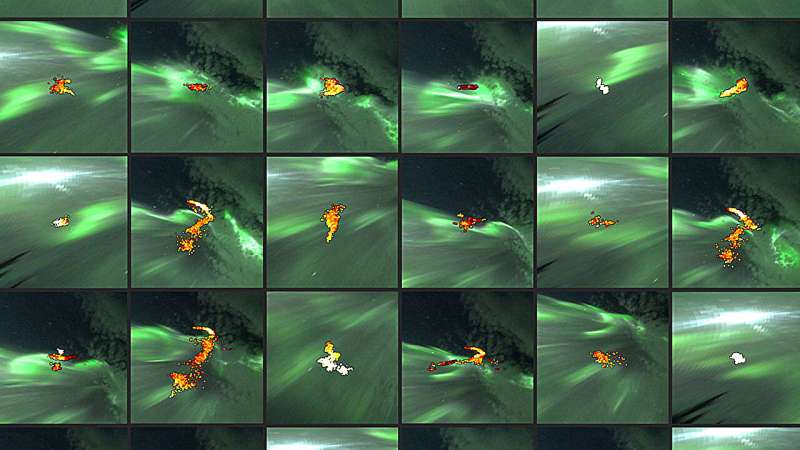
December 18, 2024 by Saima May Sidik, American Geophysical Union
Collected at: https://phys.org/news/2024-12-radar-algorithm-reveals-hidden-ionospheric.html
At night, charged particles from the sun caught by Earth’s magnetosphere rain down into the atmosphere. The impacting particles rip electrons from atoms in the atmosphere, creating both beauty and chaos. These high-energy interactions cause the northern and southern lights, but they also scatter radio signals, wreaking havoc on ground-based and satellite communications.
Scientists would like to track electrical activity in the ionosphere by measuring the distribution of plasma, the form matter takes when positive ions are separated from their electrons, to help better predict how communications will be affected by electromagnetic energy.
But analyzing plasma in the ionosphere is a challenge because its distribution changes quickly and its movements are often unpredictable. In addition, collisional physics makes detecting true motion in the lower ionosphere exceedingly difficult.
Using a dataset from a radar system called ICEBEAR (Ionospheric Continuous-wave E region Bistatic Experimental Auroral Radar), Magnus Ivarsen and colleagues applied a new algorithm that can detect clusters of radar echoes indicating plasma structures as small as a meter across and track their movement in the ionosphere. From the movement of these structures, researchers can infer the properties of the electric field causing their motion.
The researchers tested their system using data from days during which ionospheric activity was difficult to parse using conventional methods. The results were consistent with those from simultaneous low-Earth-orbit satellite measurements, which currently offer one of the few ways of understanding these high-energy interactions. The study is published in the Journal of Geophysical Research: Space Physics.
Combining the high-resolution data from ICEBEAR with the new algorithm makes it possible to track the motion of electric field bursts, the researchers conclude. However, they note that some of these bursts may be too quick or localized for the algorithm to handle, so further improving the technique to identify patterns with greater nuance is a natural next step.
The findings may help scientists predict when and how communications will be disrupted. Coupled with computer vision techniques, they could also help scientists design communication methods that are resilient in the face of electromagnetic activity in space.
More information: Magnus F. Ivarsen et al, Deriving the Ionospheric Electric Field From the Bulk Motion of Radar Aurora in the E‐Region, Journal of Geophysical Research: Space Physics (2024). DOI: 10.1029/2024JA033060

Leave a Reply